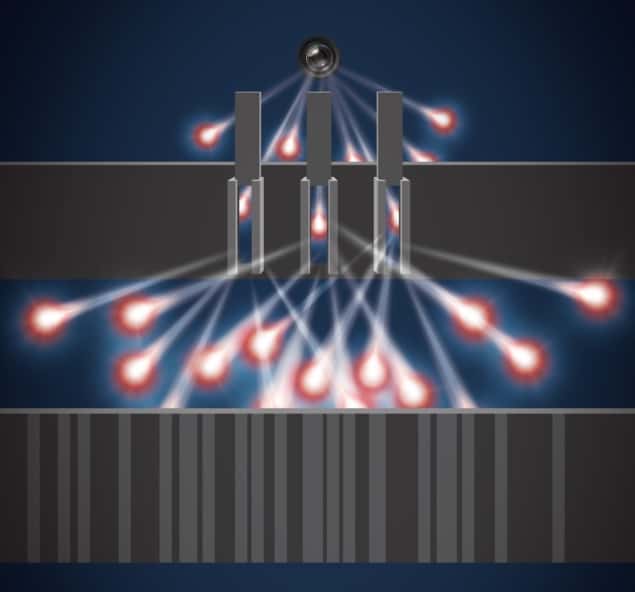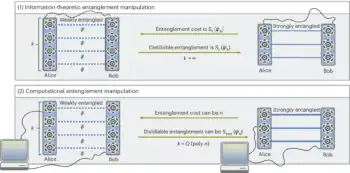
A simple experiment that sends photons through three slits provides the best proof yet of an important axiom of quantum theory called Born’s rule, say physicists in Canada and Austria. The confirmation also provides important guidance to those seeking the holy grail of physics – a quantum theory that includes gravity.
When a beam of particles such as photons or electrons is fired at two closely spaced slits, the resulting interference pattern occurs because the particles behave like waves. The intensity of the pattern can be calculated by squaring the sum of the waves that travel through each slit. This is the consequence of Born’s rule, which defines the probability that a measurement on a quantum system will yield a certain result.
Couples only
In the case of three slits, the calculation produces three terms describing interference between waves travelling through the three possible pairs of slits. There are, however, no “third-order” terms involving waves travelling through all three slits.
While Born’s rule has been central to quantum theory since the 1920s, it has not been tested experimentally with any degree of rigour. Now, Gregor Weihs of the University of Innsbruck in Austria and colleagues at the University of Waterloo in Canada have done a three-slit experiment that shows there is no third-order interference.
The measurement begins with the creation of a single photon that is fired at a mask with three slits – each 30 µm wide and separated by 100 µm. Once it has passed through the slits, the photon strikes a position sensitive detector. Single photons are fired at a rate of about 40,000 per second and a plot of photon intensity versus position gives the interference pattern as described by Born’s rule.
Summing up
To test the rule, the team repeat the measurement with one slit open at a time – and then with the three possible two-slit configurations. If Born’s rule is correct, all of these measurements should sum to give the same interference pattern seen when all three slits are open. Weihs and colleagues saw this to within 1% of the intensity of the pattern, confirming Born’s rule.
According to Weihs, any violation of Born’s rule would mean that Schrödinger’s equation – the cornerstone of quantum theory – would have to be modified. “The existence of third-order interference terms would have tremendous theoretical repercussions – it would shake quantum mechanics to the core”, he said.
However, the discovery of such a violation would be very welcome because a revised quantum theory could lead to a much sought after unified theory that incorporates the present day quantum and gravitational theories.
Providing an answer
“The question then is how radical a revision will be needed”, explains Rafael Sorkin of the Perimeter Institute for Theoretical Physics in Canada. “This experiment provides an answer by telling us that (to the accuracy achieved so far) nature is satisfied with the two-slit type of interference we already know, but does not exhibit new forms of interference involving three or more alternatives”.
Weihs told physicsworld.com that the team is now doing a similar experiment with beam splitters replacing the three slits – which should allow them to reduce the experimental uncertainty. They also plan to repeat the experiment with four and five slits.
The work is reported in Science 329 418.



